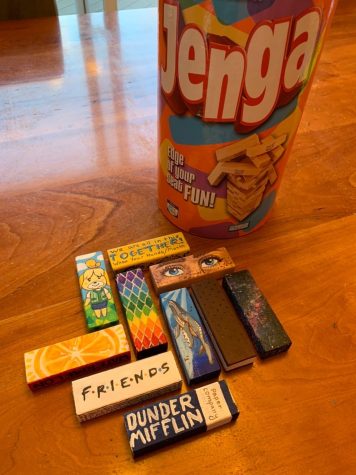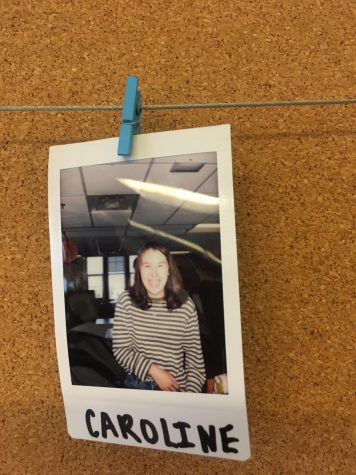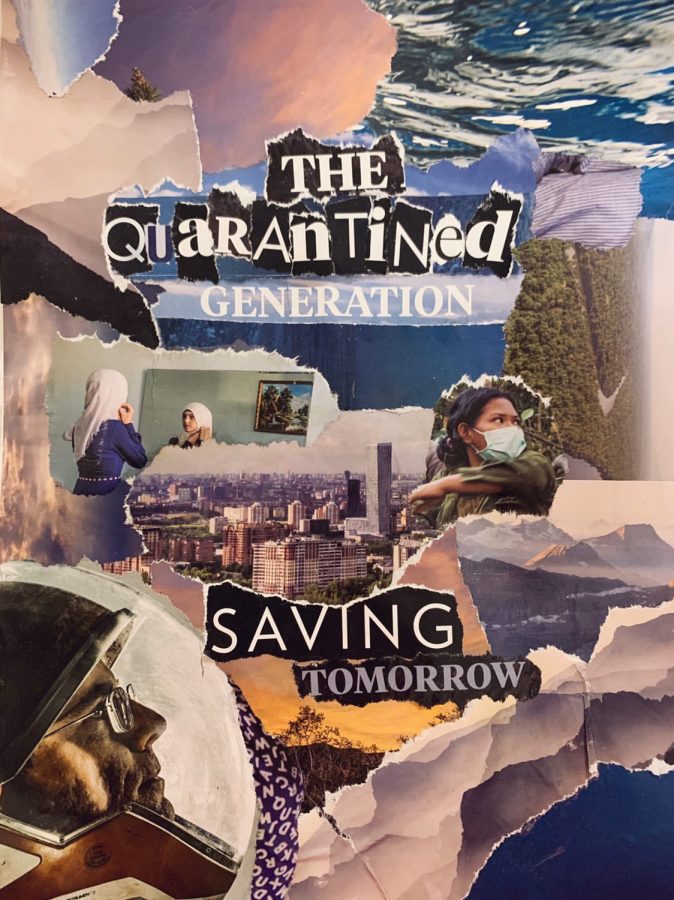Art Classes Rely on Creativity in Online Classes
Despite meeting virtually, art does not halt
The image entitled “The Quarantined Generation” by Lilian Anderson was posted on @blakequarantineart on Instagram.
At a time where isolation has become the necessary norm, many have lauded the connective power of art. Musical benefits, art shows, and crafts adorn social media, the majority with the primary purpose of helping all of us to remember that while we may be distancing, we are not alone. However, for many, art not only creates community, but also relies upon it.
As Blake Upper School art classes have transitioned to online classes, no student or teacher has missed the tension between the increased importance of their work, and the difficulty to meaningfully engage with it.
Violinist Ford Ashmun ‘20 explains, “I think that music has a really strong ability to connect people but at the same time, our technology is not to the point where we can play music live together while being seperated, so there is a dissonance there that leaves it in a state of limbo. While music is a super powerful tool to feel connected and create art collaboratively, it’s hard to do that given the platforms that are available.”
As the end of a typical school year approaches, band, orchestra and choir classes typically intensify in preparation for the spring concert. This spring, however, these classrooms lie empty as Blake Upper School art classes have transitioned online alongside the rest of classes in Minnesota and much of the nation.
The inability to meet in person combined with no clear opportunity for students to share their work has led to hard yet necessary changes, as classwork in band, orchestra, and choir typically revolves around the performance schedule. Choir teacher Ben Henschel explains that, “In a performing based class, all of our classroom expectations, classroom routines, and classroom goals are performance focused. To remove that framework meant for me that most everything had to change.”
Classes that normally consisted of warm ups, laughter, troubleshooting rhythms, and carefully constructing harmonies now convene over Zoom twice a week, with most students on mute as teachers flip between screens to see all of their students. These changes are also applicable to visual arts classes. Where a large class size was once an advantage, creating levity and interpoint curiosity, it now serves to be even more alienating. Ceramics student Annabelle Swigert ‘22 explains that “Less people want to talk and speak up. It’s very weird. It just doesn’t feel like I’m connecting or with any of the kids in my class when we are just looking at each other through a computer screen.”
Inevitably, sadness has accompanied these changes. Instrumental Music teacher Brian Olson says, “At least to me, it’s been devastating. It’s really disappointing, I imagine it’s been disappointing to the students who’ve been working hard as well. …. I was really happy with the music that we were working on and the way that we were working to just abruptly come to an end…is just really disappointing.”
Just as the format of classes has changed, content and activities has morphed in response to distance learning. Band and orchestra students are recording themselves remotely, creating videos with tips and tricks for middle school instrumentalists. Choir students are learning more music theory through ted talks and working to maintain their close community. Henschel explains, “Our concert has been cancelled…we aren’t looking at repertoire the way that we were before with the intention of sharing our understanding with a broader audience. However, there are elements of our classroom purpose that are still there. Community and music and laughing and me telling stupid stories and showing off my hairless cat— those things still get to be a part of what we do”
Visual arts students are able to draw or paint whatever they like, either sticking to curriculum or creating that which they feel called to. Visual Arts teacher Bill Colburn has created numerous prompts for students to take inspiration from, intentionally making space for students to process what is happening. “If they need to be doing art that deals with COVID-19, there’s a space for that,” he explains, “Everyone is so different. I’ve seen many drawings that are portraits with masks, which is such a strong image of this time.”
The combination of isolation and disappointment has, however, increased students’ desire to be in class, even if they don’t actively participate. Colburn shares that, “Attendance has been perfect. Everyone is showing up for class everyday. That never happens, especially for classes with seniors in them.”
The desire for connection through art has not stopped just in classes. The Bennet Gallery Curatorial Team, once responsible for curating the art shows in the Bennet Gallery, now runs the Instagram account @blakequarantineart. The account invites all members of the Blake community to share their quarantine artwork. “People have a broad definition of the word art– I really love that. They’ve sent in food and projects from science class. I also love that there have been students, teachers, and parents from all of the campuses sending in art,” explains account manager Yeukai Zimbwa ‘20.

While the format of art classes has changed, their intention to express emotion, cultivate community, and create meaning through creativity has not. Zimbwa explains that, “For me personally, looking at art is a comfort… it’s a nice solace to be able to make art and look at art.” Henschel echoes this sentiment in the context of the choral arts, explaining that “Music can help people process through what’s happening and connect, which is also an important part of processing…“Right now, I’m hoping that it can get us laughing, talking, thinking, and not stressing.”
In response, this intention and even need to connect, channel and create art has intensified. Olson explains that in this time, “It becomes more important. Harder, but more important to be making music even though you can’t as an ensemble.. A big part of music feeds the soul and can see you through difficult times. Making music and listening to music is important the fewer people you see and can be around and interact with. I think making music or making art, drawing, writing poetry, things that nourish you inside, become even more important.”

Hi, I'm Caroline! I'm a senior. In the past two years, I've edited Student Life and Features. I'm currently Co-Editor-in-Chief and I edit InDepth. My favorite...








